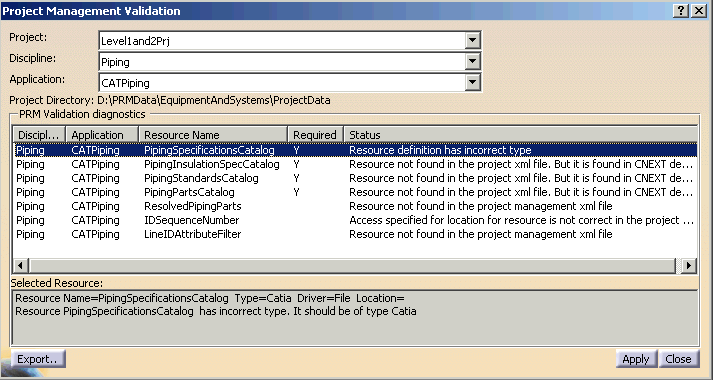Checking a PRM File for Errors
|
|
This task shows how you can check a project resource management (PRM) file for certain errors. | |
|
|
This tool will only check
required and optional resources in the PRM file for errors.
Required resources are those that the application needs, such as catalogs.
Optional resources are those without which the application can still be
used, and example is the ID sequencing number. There are other resources in
the PRM file that are not checked at all - these are resources that add
functionality to the application. Examples of these are flags that are set
through the PRM file - these cannot be checked for errors because there is
no way of telling what the user has set them to. See Using the PRM Command for information about syntax errors in the PRM file. The environment variable CATDisciplinePath should be defined to point to the directory where your PRM files are stored. |
|
|
|
1. | Click Tools - Project Management - Validation in the
menubar to bring up the Project Management Validation dialog box. The image
below shows part of it without any selections having been made. The active
project, discipline and application will be selected by default when the
dialog box opens.
|
| 2. | Select a Project, Discipline and Application as necessary. If you select ALL in the Discipline and Application fields then the entire project resource management file will be checked (required and optional resources only). | |
| 3. | Click Apply after you have made your selection. The dialog
box will display the resources that have errors. The errors are explained
below.
|
|
| 4. | The errors are explained below. Also see the PRM task for
more information.
|
|
| 5. | You can save the report. Click the Export button and enter a file name and location in the Save dialog box that displays. The file must be saved in .htm format. | |
|
|
||

